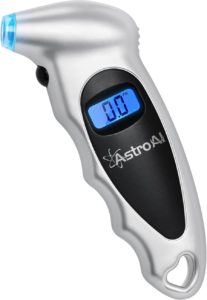Mazda 3 Tire Pressure Monitoring System Description
Mazda3’s cutting-edge tire pressure monitoring system (TPMS) is an important feature that acts as your personal tire pressure guardian. Think of it as your car’s intuitive way of nudging you when your tires require some TLC. The TPMS ensures you’re always in the know about your tire pressure, providing crucial alerts if something is amiss.
How Does the MAzda3 TPMS Work?
2019 – PRESENT MAZDA3
Tire Pressure Sensors: Each wheel of the Mazda3 is equipped with a tire pressure sensor, which continuously measures the air pressure inside the tire.
Data Transmission: The sensors transmit tire pressure data via radio frequency signals to a dedicated receiver unit located within the vehicle.
Receiver Unit: The receiver unit processes the data from all four tire pressure sensors, determining if any of the tires have pressure levels below the recommended threshold.
TPMS Warning Light: If the system detects a tire with pressure below the specified value, it activates the TPMS warning light on the instrument cluster to alert the driver.
Multi-information Display: Alongside the TPMS warning light, the system also displays a message on the multi-information display, providing further information about the tire with low pressure.
Real-time Monitoring: The Mazda 3’s Direct TPMS continuously monitors the tire pressure, allowing for real-time updates and alerts if pressure fluctuations occur while driving.
Manual Pressure Check: Drivers can view the current tire pressure readings at any time through the central display, allowing them to proactively maintain their tires and ensure optimal performance.
NOTE: The 2013-2018 Mazda 3 doesn’t use individual tire pressure sensors. Instead, it uses an indirect TPMS. This means that it uses its wheel speed sensors & ABS to monitor the rotational speed of each wheel. It does this by analyzing wheel speed variations and detects a tire with low pressure by checking discrepancies in wheel speeds.
How to Reset Mazda3 Tire Pressure Light
2019 – Present Mazda3
Check all tires manually with a tire pressure gauge.
Drive the vehicle at 16 Mph or more for at least 3 minutes.
The tire light will reset itself and the pressures on the infotainment system will be whatever you manually set them to.
2013 – 2018 Mazda3
Make sure the tire pressures in all four tires are correct as specified on the tire placard.
Turn the ignition switch to the “ON” position.
Press and hold the tire pressure monitoring system (TPMS) button until the TPMS indicator light in the instrument cluster flashes twice.
Release the TPMS button. The TPMS indicator light should turn off.
Drive the vehicle at speeds above 16 mph (25 km/h) for at least 10 minutes.
TIP: If the tire pressure light won’t go off after following these steps, double check your air pressure manually with a tire gauge and then repeat the reset procedure. (tire pressure gauge we recommend below)
2019 - PRESENT MODEL
2013 - 2018 MODEL
Malfunctioning Tire Pressure Monitoring System
Your Mazda 3 features a clever TPMS malfunction indicator designed to inform you when the system isn’t functioning as intended. This indicator shares the same dashboard light as the low tire pressure warning but serves a distinct purpose. Should the TPMS encounter a problem, the warning light will blink for approximately one minute before remaining illuminated consistently. This sequence will recur each time the car is started until the issue is resolved. Be aware that while the indicator is active, the system may not effectively notify you of low tire pressure. (Basically, your tire pressure monitoring system won’t work correctly until the problem with the system is resolved) Various factors, such as incompatible tires or wheels or a faulty tire pressure sensor will trigger TPMS issues. Always inspect the TPMS malfunction indicator after altering tires or wheels on your vehicle to guarantee seamless operation.
What Can Cause the Mazda3 Tire Pressure Light to Turn On?
Low Tire Pressure: The most common reason for the TPMS light to turn on is when one or more tires have air pressure below the recommended threshold.
Rapid Pressure Loss: A sudden loss of tire pressure like a puncture or leak, will trigger the TPMS light.
Sensor Malfunction: A faulty tire pressure sensor may report wrong tire pressure levels, causing the TPMS light to turn on.
Dead Sensor Battery: Tire pressure sensors are powered by built-in batteries, which have a limited lifespan. A dead battery may cause the TPMS light to illuminate. They look like typical wrist watch batteries and only last about 5-7 years.
Interference: Radio frequency interference from other electronic devices or systems can disrupt the signals between the tire pressure sensors and the receiver unit, resulting in the TPMS light turning on.
Damaged Receiver Unit: A malfunctioning or damaged receiver unit may be unable to process tire pressure data correctly, causing the TPMS light to activate. (This is the least likely culprit)
Incorrect Tire Size: Installing tires with a different size than the vehicle’s specifications may impact the TPMS sensor readings, leading to the TPMS light turning on. (Always replace tires with OEM sized tires)
Replacement or Rotation: Tire replacement or rotation can cause the TPMS light to activate if the system is not properly reset or re-calibrated afterward.
Wheel Replacement: If you replace a wheel or rim without swapping over the tire pressure sensor to the new wheel, the tire light will not go off.
Temperature Changes: Extreme temperature fluctuations can cause the air pressure inside tires to change, potentially triggering the TPMS light.
Initialization Issue: If the TPMS system is not initialized correctly after servicing or resetting, the TPMS light may turn on.
Software Error: A software issue within the TPMS system could cause the light to activate erroneously. (This is also very unlikely unless Mazda says the vehicle needs a software update)
What Happens When Tires are Underinflated?
Underinflated tires on your Mazda3 can lead to a variety of unwelcome consequences. Firstly, the ride quality suffers, diminishing the smoothness and comfort of your driving experience. More critically, underinflated tires adversely affect fuel efficiency by creating increased rolling resistance, forcing your Mazda 3 engine to work harder. Additionally, these tires experience uneven and accelerated tread wear, reducing their overall lifespan. Most concerning, underinflated tires can jeopardize your safety by impairing handling, traction, and braking capabilities. To maintain peak performance and ensure a secure driving experience, always ensure your Mazda3’s tires are properly inflated!
When Should You Recalibrate the Mazda 3 TPMS?
Tire Replacement: Recalibrate the TPMS when you replace one or more tires to ensure the system accurately monitors the new tire’s pressure.
Tire Rotation: Recalibrate the TPMS after rotating tires, as the pressure sensors’ positions will have changed.
Tire Balancing or Alignments: Reset TPMS anytime tires are balanced or wheels aligned. This includes suspension work.
Seasonal Tire Change: When swapping between winter and summer tires, recalibrate the TPMS to accommodate the new set of tires. If you’re using different wheels, swap the sensors over to the other wheels.
Wheel Replacement: If you replace any wheels, recalibrate the TPMS to ensure proper communication with the new wheel’s tire pressure sensor.
Low Tire Pressure: After inflating a tire that has lost pressure, recalibrate the TPMS to clear any warning lights and re-establish accurate monitoring.
Battery Replacement: If you replace or jump the battery in your Mazda3 or in the tire pressure sensor itself, recalibrate the TPMS to ensure proper functionality.
Sensor Replacement: If you replace a faulty tire pressure sensor, recalibrate the TPMS to guarantee accurate communication between the new sensor and the receiver unit.
Temperature Changes: Significant temperature fluctuations can impact tire pressure; recalibrate the TPMS to adjust for these changes and maintain accurate monitoring.
TPMS-related Repairs: After any maintenance or repairs related to the TPMS (fixing a malfunctioning receiver unit or replacing tire valve seals), recalibrate the system to confirm proper operation.
Software Updates: In case of any software updates by Mazda, recalibrate the system to ensure it functions correctly with the updated software.
How Weather Affects Tire Pressure

For every 10 degrees change in weather temperature, tire pressure can fluctuate by about 1 psi. For example, when the temperature drops from 80°F to 50°F, your tire pressure will decrease by approximately 3 PSI. The chart above displays the connection between temperature changes and tire pressure in both Fahrenheit and Celsius, as well as PSI and kPa units. It highlights that tire pressure tends to decrease as temperatures fall and increase as temperatures rise. A baseline temperature of around 62°F (16.7°C) is considered the standard for checking tire pressure, as it is typically stable in terms of pressure changes.
Mazda3 Tire Maintenance
It’s essential to adjust your Mazda3’s tire pressure when the tires are cold to get accurate readings. This means before driving long distances. Driving generates heat from the friction between the tires and the road, leading to air expansion within the tires causing increased pressure. Checking and adjusting tire pressure while they’re cold helps maintain peak performance, safety, and fuel efficiency while driving. So, next time you check your tire pressures, try to check them when your tires are cold! Remember to check your tire pressure at least once a month and prior to any long journeys!



